21. August, 2025delish0
Behind the three words "high precision" is the ultimate pursuit of countless technical details. Let's uncover its secrets from the two core dimensions of minimum slitting width and error control.
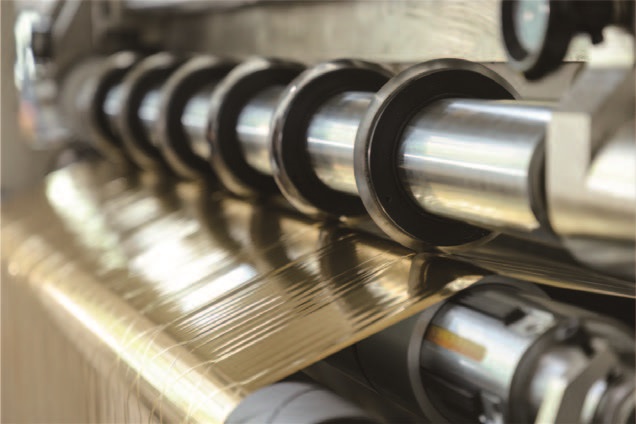
Part 1: Minimum Slitting Width – The Ultimate Challenge of Technology
The minimum slitting width is a direct reflection of the state-of-the-art technology of the slitting machine. It is not easy to achieve millimeter or even submillimeter slitting, which is constrained by a "barrel effect", that is, the weakest link determines the final limit.
1. Slitting tool holder system (the core constraint)
• Tool holder density and design: The tool holder itself has a certain width, and when it is necessary to slit extremely narrow strips, the physical distance between the tool holders becomes a bottleneck. The high-precision slitting machine adopts an ultra-tight distance tool holder or a separately driven servo tool holder. Each tool holder can be moved independently on the slide rail, and the spacing can be controlled by the program, which completely solves the problem of physical interference and provides the possibility of achieving extremely small width slitting.
• Blade Precision and Form:
◦ Blade material: Materials with ultra-high hardness and high wear resistance must be used, such as powder metallurgy high-speed steel, ceramic-coated blades, polycrystalline diamond (PCD), or cubic boron nitride (CBN) blades. These materials ensure that the cutting edge remains sharp for a long time, avoiding uneven cutting edges or burrs due to wear.
◦ Blade type: For extremely thin, sensitive materials (such as optical films, lithium battery separators), "pad knife" or "round knife cutting" is often used. The upper and lower circular knives are rolled precisely like scissors to complete the shear and cause minimal damage to the material. The roundness, dynamic balance, and installation accuracy of the knife must be extremely high.
2. Rewinding and unwinding technology
• Core Accuracy: If the core itself runs out or deforms, it will be amplified at high speeds, resulting in deviation and wrinkling of the film belt, making it impossible to achieve stable slitting at all. High-precision slitting machines use ultra-high-precision air shafts (e.g. steel sheet or keybar) to ensure clamping force and roundness.
• Contact rollers (drums): Many high-precision slitting machines use a central winding (surface winding) method, where the material is wound against a large diameter steel roller (drum). The steel roller is precision machined with minimal dynamic runout, providing solid support for the material and preventing extremely narrow strips from "slipping" or "stuck" during winding.
3. Material handling (handling) ability
• The properties of the material itself (e.g., thickness, stiffness, surface friction coefficient) also affect the minimum slitting width. Very thin and soft materials (e.g. PET film, copper foil) are highly prone to wrinkling, stretching or breaking during slitting and winding, which places abnormal demands on tension control and parallelism of guide rollers.
Conclusion: The minimum slitting width is the result of the joint action of high-density tool holder, ultra-precision insert and extremely stable unwinding system, and one is indispensable.
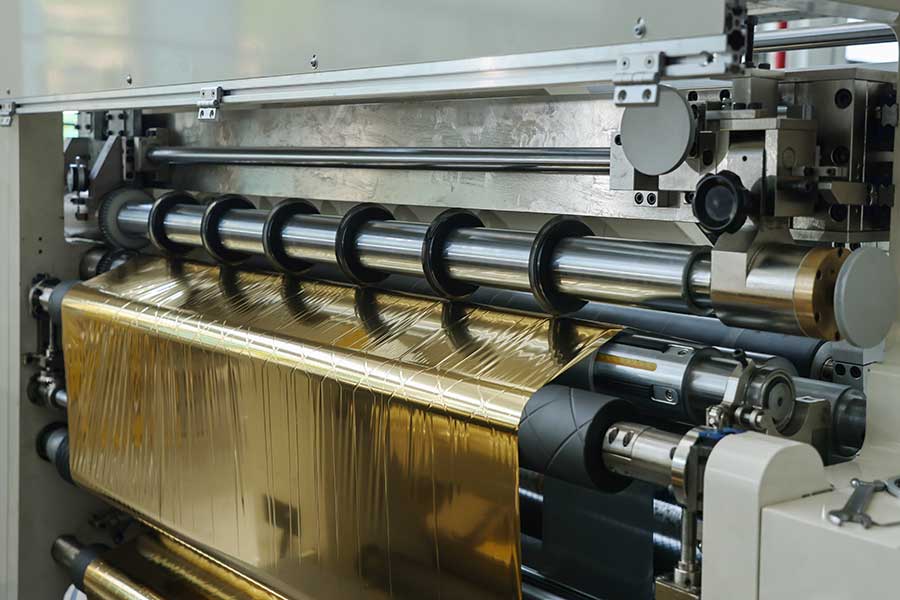
Part 2: Error Control - System Engineering Behind Precision
Error control is the soul of the slitting machine, which determines the quality level and value of the slitting product. Error is a systematic project, mainly including static error and dynamic error.
1. Static Error (Fundamental of Machinery)
• Machining and assembly precision: This is the foundation of all precision.
◦ Base and wall plate: Made of high-quality cast iron and stress-relieved to ensure long-term structural stability and shock resistance. The mounting surfaces of all guide rollers and cutter shafts need to be milled and ground with high precision.
◦ Guide Rollers and Bearings: All guide rollers must be dynamically balanced (usually required to be rated G2.5 or higher) to ensure vibration-free operation at high speeds. The bearings are always made of ultra-high precision (such as P4, P2 grade) bearings to ensure that the radial and axial runout are controlled at the micron level.
◦ Guide roller parallelism: This is the lifeline to prevent material misalignment and wrinkling. During assembly, the parallelism of all guide rollers needs to be corrected with a laser interferometer or a high-precision electronic level, and the error is usually required to be less than 0.01mm in the full length range.
2. Dynamic Error (Soul of Control)
• Tension control: This is the core technology of high-precision slitting machines, which directly affects the tightness, neatness, and even slitting accuracy of the slitting strips.
◦ Multi-stage closed-loop control: From unwinding, traction to rewinding, forming multiple independent tension control closed loops. It adopts high-precision tension sensor for real-time detection, magnetic powder clutch/brake or more advanced servo torque motor as the actuator, and PID calculation by PLC or special controller to achieve precise and smooth transition of tension.
◦ Taper control: When winding, as the roll diameter increases, if the tension is constant, the inner material will be crushed (creating a "chrysanthemum pattern"). Therefore, taper tension control must be adopted, that is, the tension decreases according to a specific curve with the increase of the coil diameter to ensure that the tightness of the inner and outer layers is consistent.
• Guiding System (EPC): A critical system that ensures that the edges of the slitting strip are neat and the slitting position is accurate.
◦ CCD or ultrasonic sensors are used to detect the edge of the material or the position of the printing line in real time.
◦ The detection signal is transmitted to the controller, and the servo motor is driven to quickly adjust the swing angle of the correction roller to pull the material back to the correct position in real time. Responsiveness and control precision directly determine the quality of the trimming.
• Drive and Control Technology:
◦ Electronic drive: Modern high-precision slitting machines have been widely used with full servo drive. Each main roller (unwinding, traction, winding) is driven by an independent servo motor, which maintains strict synchronization in the controller through the electronic gearbox (EGB) function, completely eliminating the errors such as gear clearance and torsional deformation caused by traditional mechanical long-shaft transmission.
◦ Human-Machine Interface (HMI): Operators can easily set all parameters (width, speed, tension curve, etc.), and the system automatically calculates tool position and vehicle speed matching. Production process data is recorded and monitored in real-time for traceability.
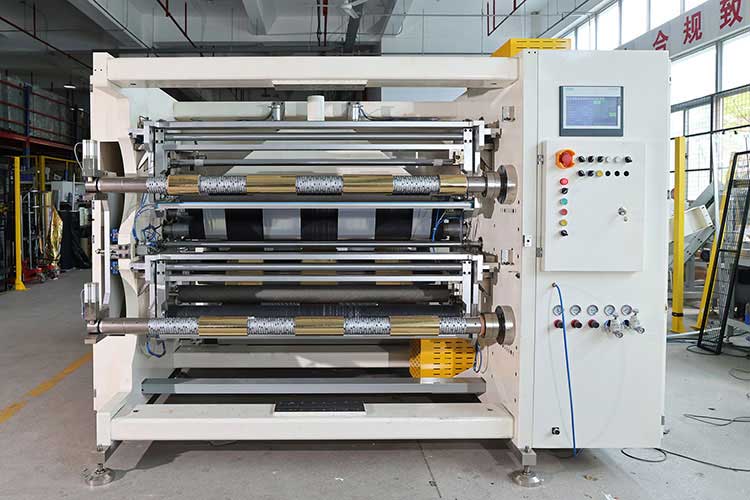
Summary: The secret list of high-precision slitting machines
1. Precision mechanical platform: The highly rigid matrix, ultra-precision machined and assembled guide rollers and bearings are the physical basis for all precision.
2. Extreme tool holders and knives: High-density, individually adjustable servo tool holders with ultra-hard and ultra-wear-resistant professional blades are the prerequisites for achieving minimum width and clean cuts.
3. Intelligent "brain" and "nerve": The PLC/industrial PC-based multi-stage closed-loop tension control system and high-speed and high-precision deviation correction system (EPC) are the core to cope with dynamic interference and maintain stable operation.
4. Powerful "heart": The fully servo drive system provides a precise, synchronized, and responsive power source, replacing backward mechanical transmission.
5. System integration and optimization: Perfectly integrate all the above subsystems, through a large amount of process data accumulation and algorithm optimization, so that the machine can not only be "hard", but also "think", and can cope with the characteristics of different materials, which is the core competitiveness of top slitting machine manufacturers.
All in all, the secret of the high-precision slitting machine is to lay a solid foundation with the ultimate mechanical precision, and then use the intelligent electronic control system to give it a soul and eyes, so as to achieve micron-level stability and accuracy in high-speed operation.



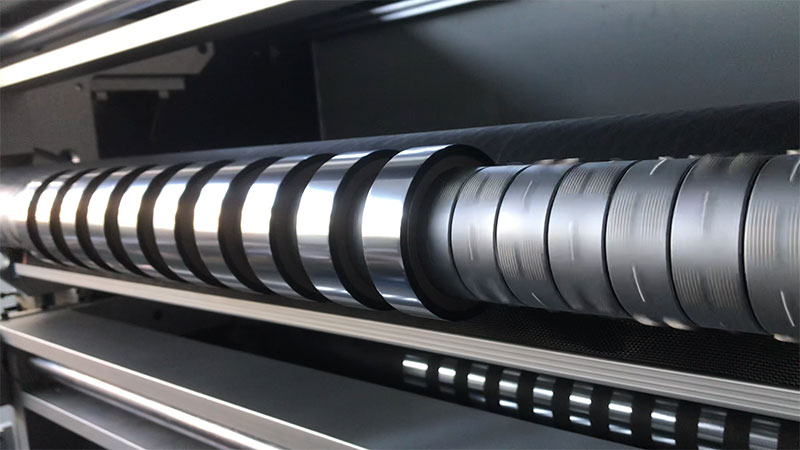
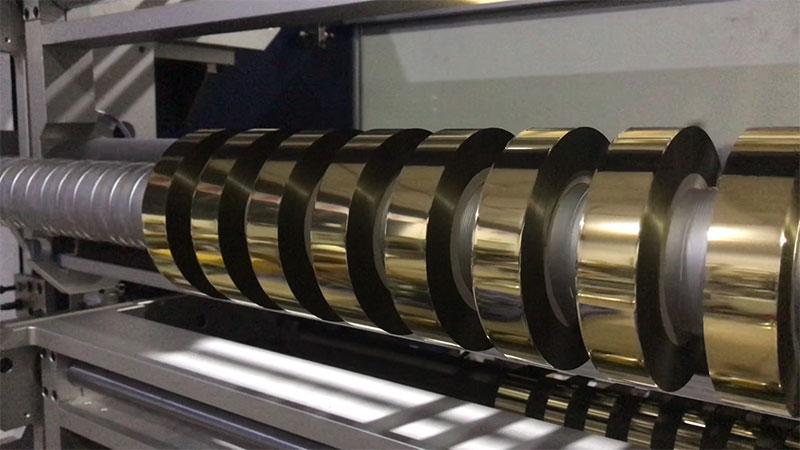
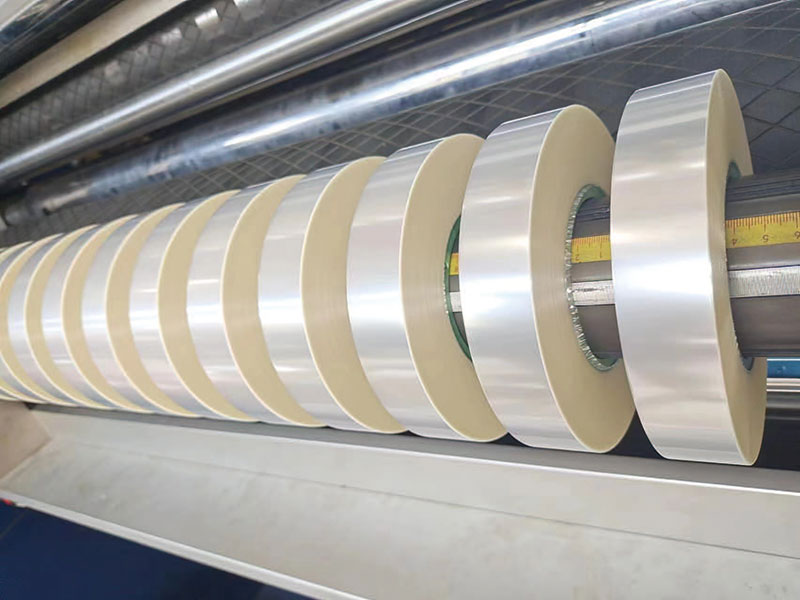
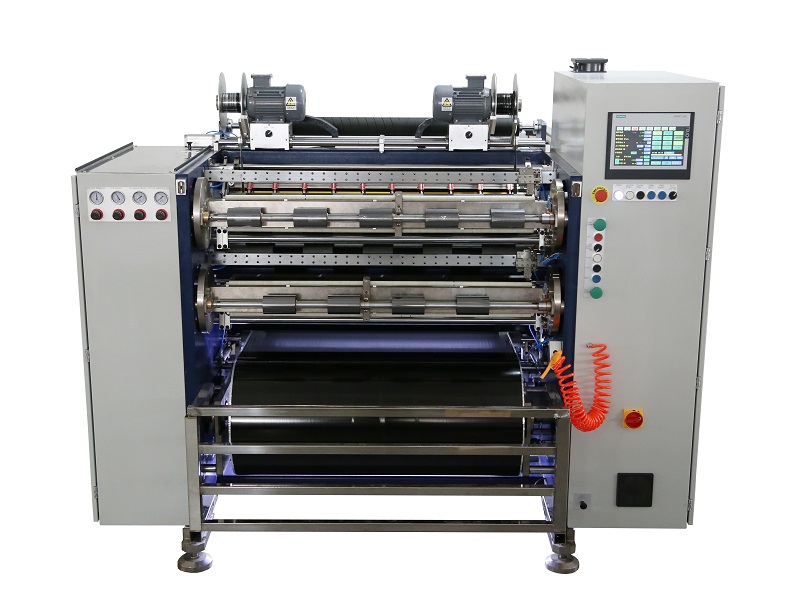 Fully Automatic TTR Slitter RSDS8 Plus
Fully Automatic TTR Slitter RSDS8 Plus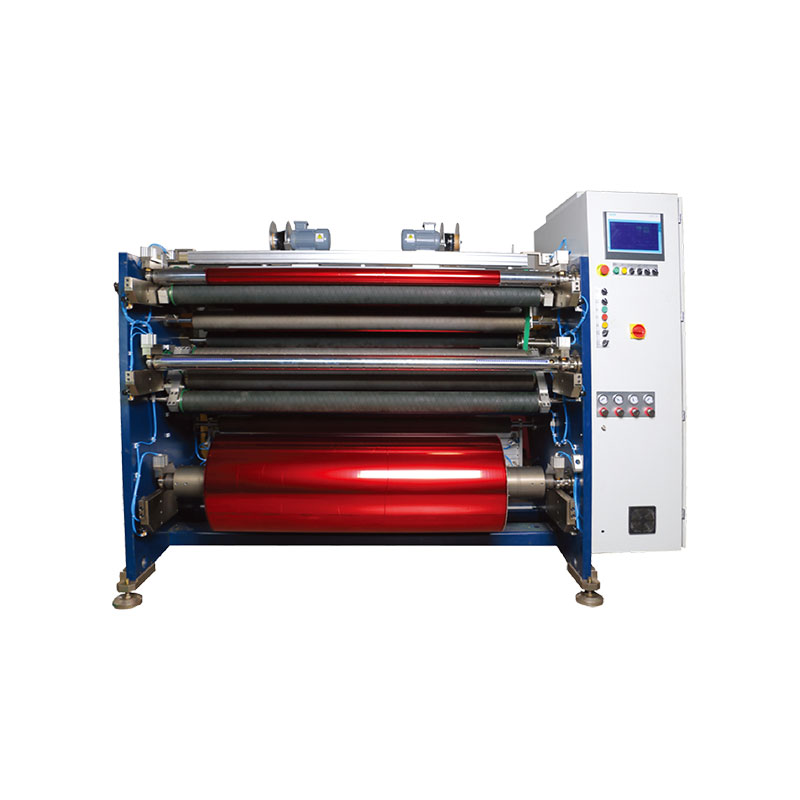 Hot Stamping Foil Slitter 1600mm
Hot Stamping Foil Slitter 1600mm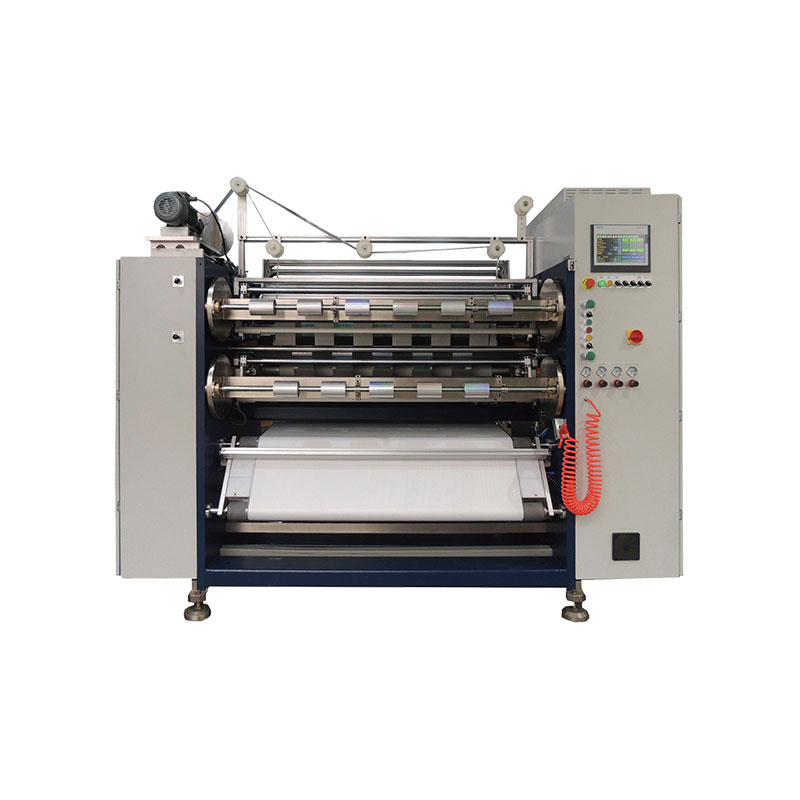 Hot Stamping Foil Slitter (4 Shafts)
Hot Stamping Foil Slitter (4 Shafts)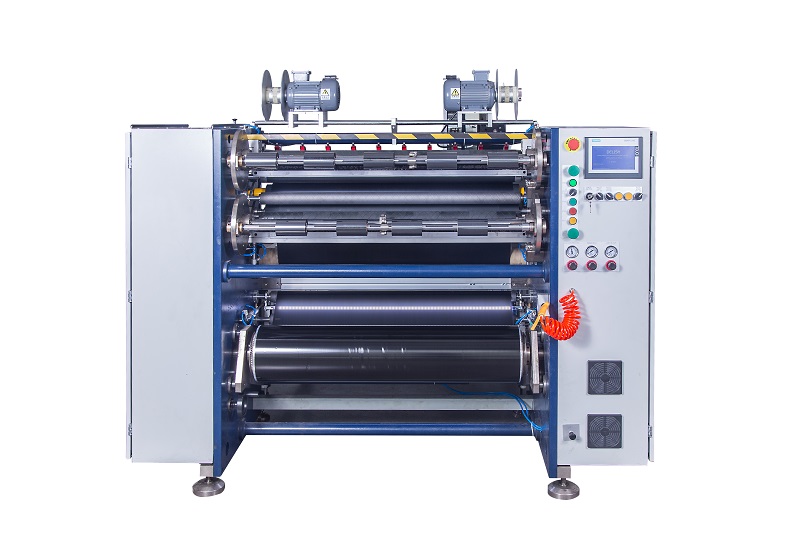 Semi-Auto TTR Slitter RSDS2 Plus
Semi-Auto TTR Slitter RSDS2 Plus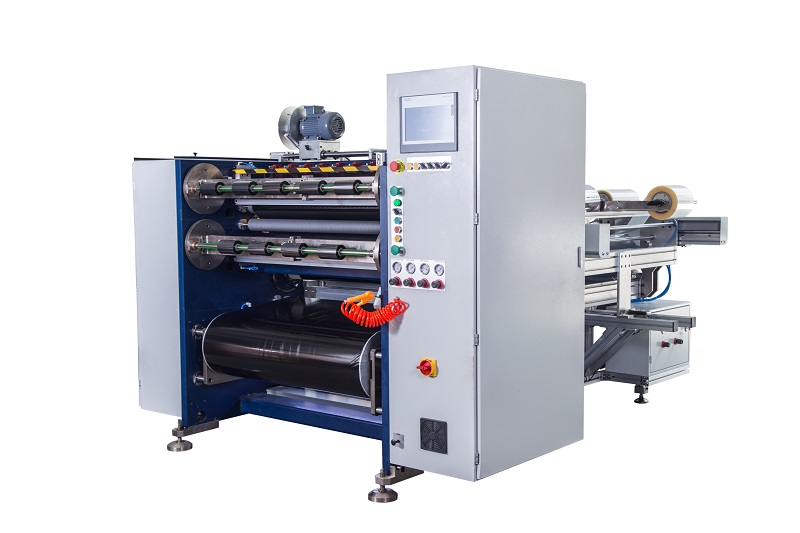 Semi Automatic TTR Slitter RSDS5 Plus
Semi Automatic TTR Slitter RSDS5 Plus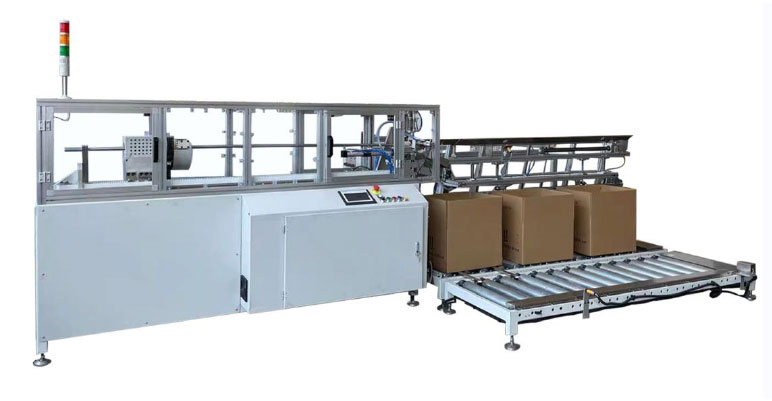 Auto Paper Core Cutter
Auto Paper Core Cutter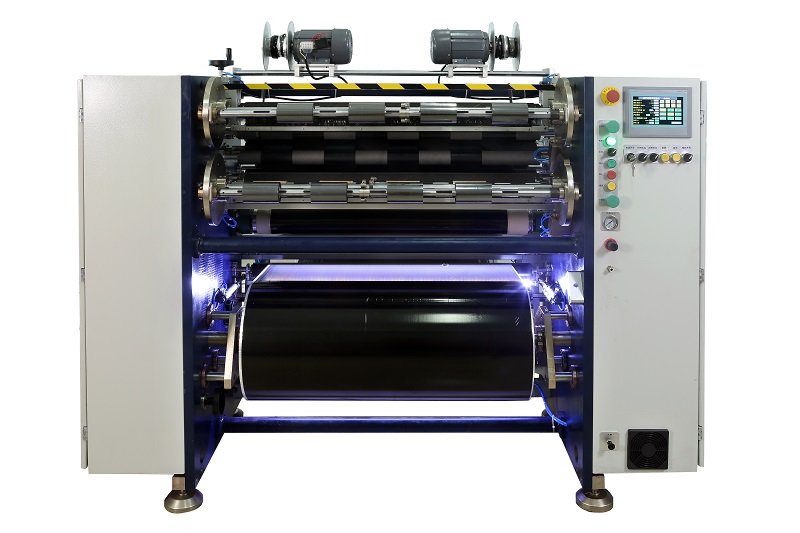 Manual TTR Slitter RSDS2
Manual TTR Slitter RSDS2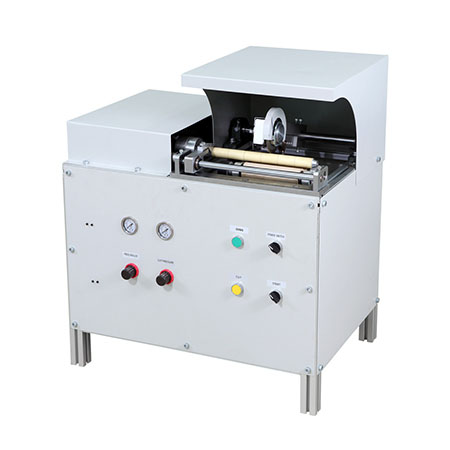 Manual Paper Core Cutter
Manual Paper Core Cutter





